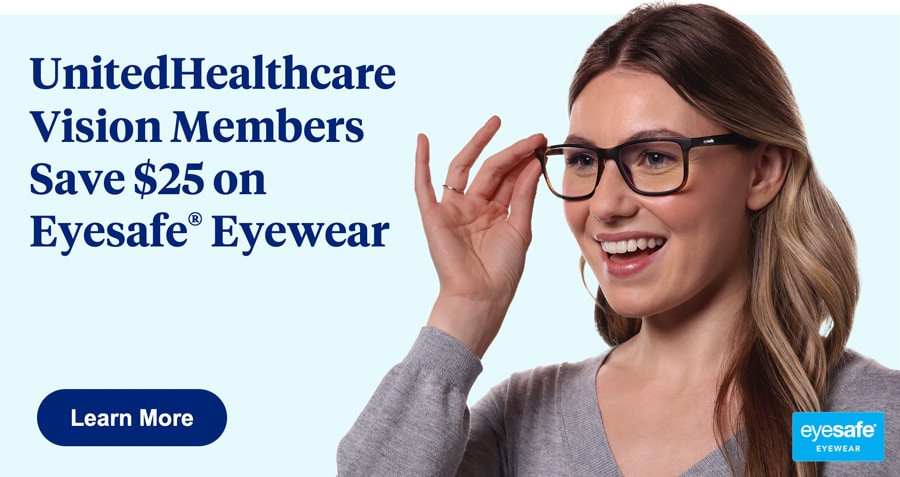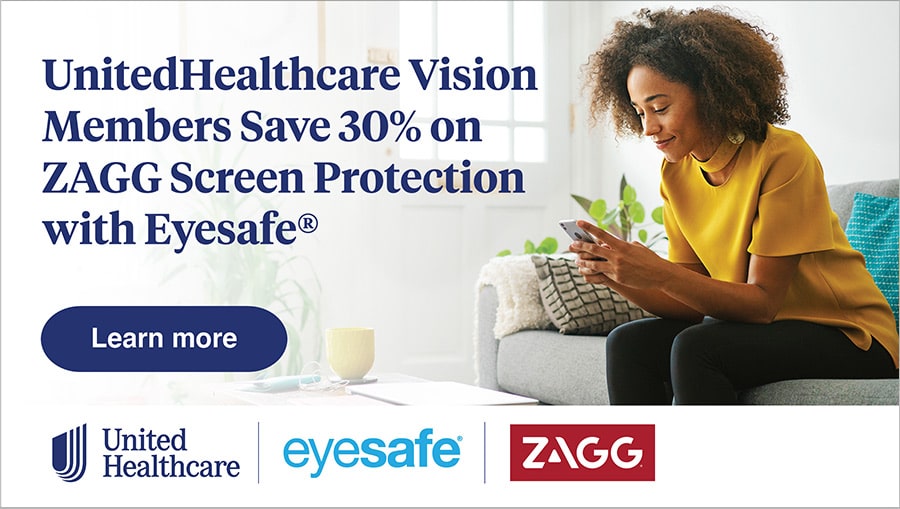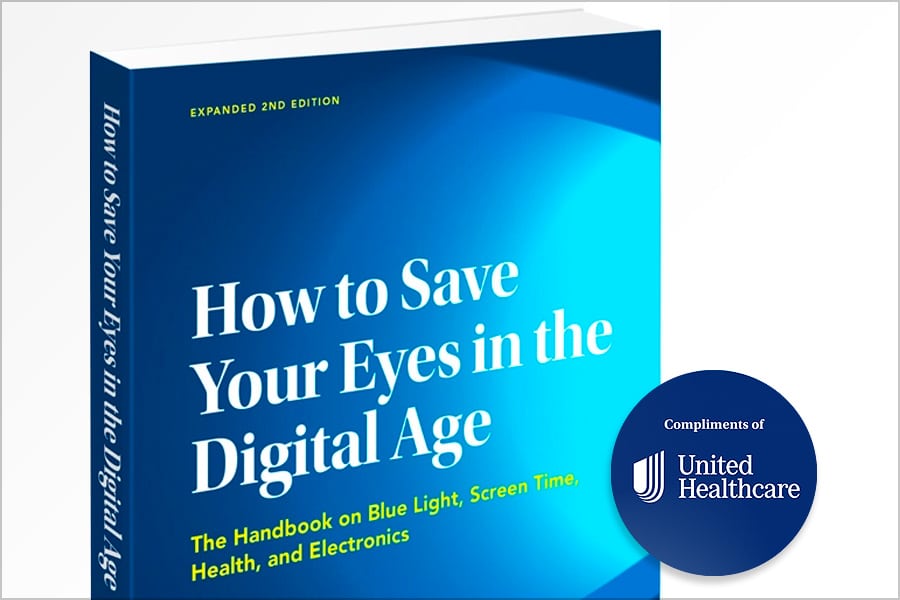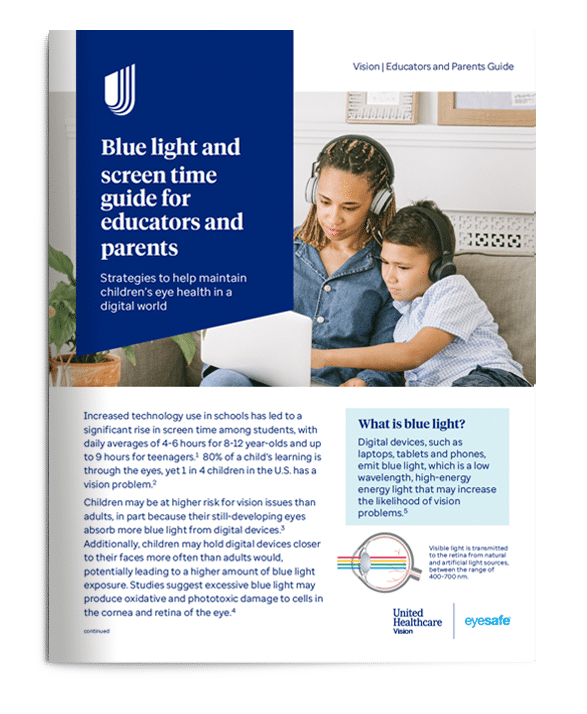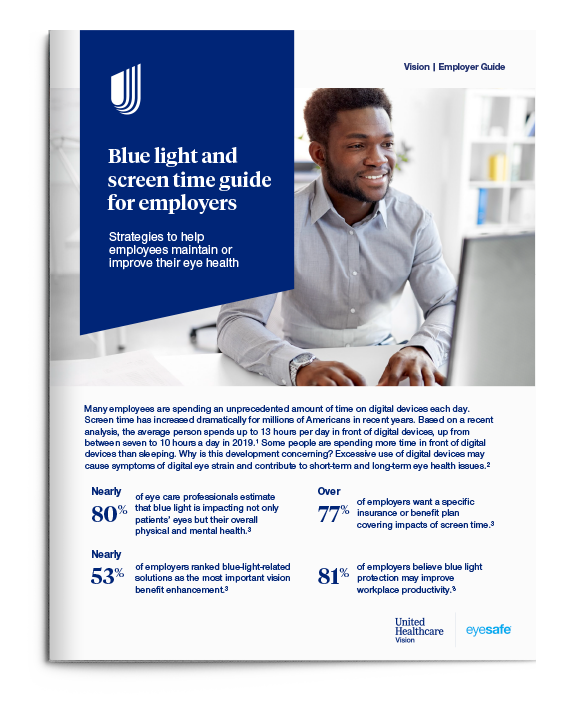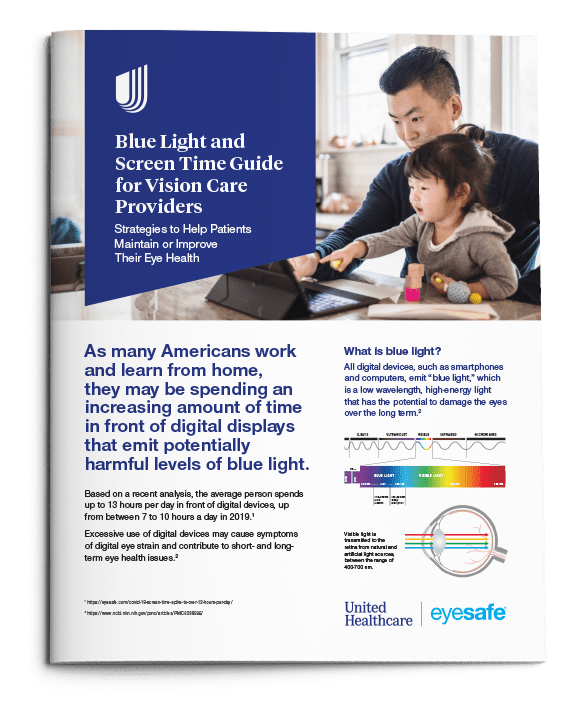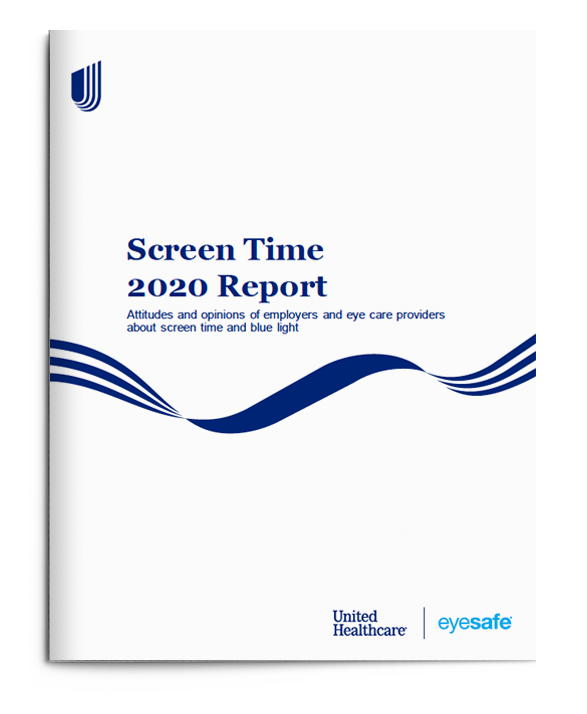The collaboration between Eyesafe and UnitedHealthcare provides innovative solutions to help Vision members manage their exposure to blue light, which poses potential risks to eye health and sleep. With screen time increasing for work, learning, and entertainment, prolonged device use has become a part of daily life. Recognizing this, UnitedHealthcare is introducing new programs designed to help members reduce their exposure to blue light from and support overall wellness.
The collaboration between Eyesafe and UnitedHealthcare provides innovative solutions to help Vision members manage their exposure to blue light, which poses potential risks to eye health and sleep. With screen time increasing for work, learning, and entertainment, prolonged device use has become a part of daily life. Recognizing this, UnitedHealthcare is introducing new programs designed to help members reduce their exposure to blue light from and support overall wellness.
Eyesafe® Eyewear $25 Voucher for UnitedHealthcare Vision Members
Members can now enjoy a $25 voucher toward Eyesafe Eyewear, developed with doctors to deliver advanced blue light filtering. This stylish collection of eyewear is made for professionals who spend long hours on screens, reducing digital eye strain and protecting sleep. To take advantage of this exclusive offer, members can visit the UnitedHealthcare Vision Savings and Discounts page.
30% Off ZAGG Screen Protection with Eyesafe® Technology
Millions of UnitedHealthcare members have access to savings on premium screen protections with Eyesafe blue light filtration. An exclusive 30% discount allows members to reduce blue light from their phones and tablets, offering an extra layer of protection for the device screen and and eye health. Members can visit the UnitedHealthcare Vision Savings and Discounts page to learn more and redeem this special offer.
How to Save Your Eyes in the Digital Age
The Handbook on Blue Light, Screen Time, Health and Electronics
The most comprehensive resource on high-energy blue light from digital devices, this handbook from UnitedHealthcare and Eyesafe provides valuable information, including the latest research and guidance from leaders in the eye care community.
“We are proud to partner with Eyesafe in a collaboration that drives awareness and expands access to blue light protection for our more than 25 million UnitedHealthcare Vision members. By helping protect individuals from high-energy blue light, we’re not only supporting vision health but also contributing to their overall well-being. This initiative reflects our commitment to enhancing both eye care and long-term health for the people we have the privilege to serve.”
– Lori Archer, CEO, UnitedHealthcare Vision
RESOURCES
Blue Light in the News
1 Screen Time Report 2020
2 Screen Time Survey of Parents & Educators Results
3 2022 Screen Time Survey of Educators (408) and Parents (484) in the US, Jan. 2022
The content is not intended to be a substitute for professional medical advice, diagnosis or treatment. Talk with your healthcare provider about any questions you may have regarding a medical condition.
Contact Us
By submitting your information, you are opting into marketing communications and agree to be contacted by Eyesafe or one of our partners with more information.
